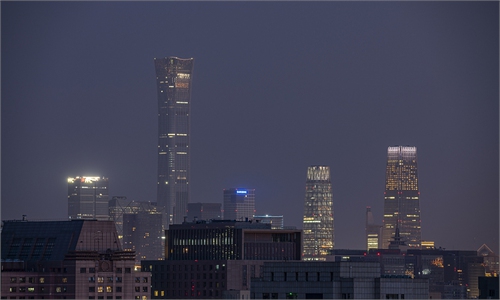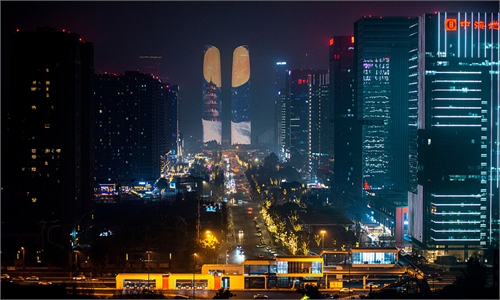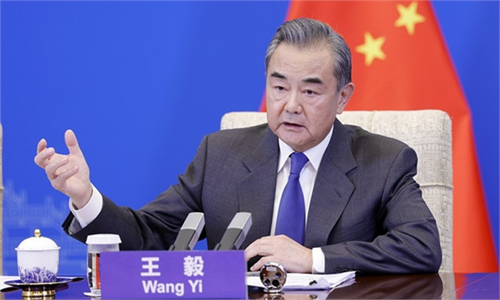Accusations over China creating a ‘debt trap’ in Sri Lanka an organized smear by the West and India against BRI
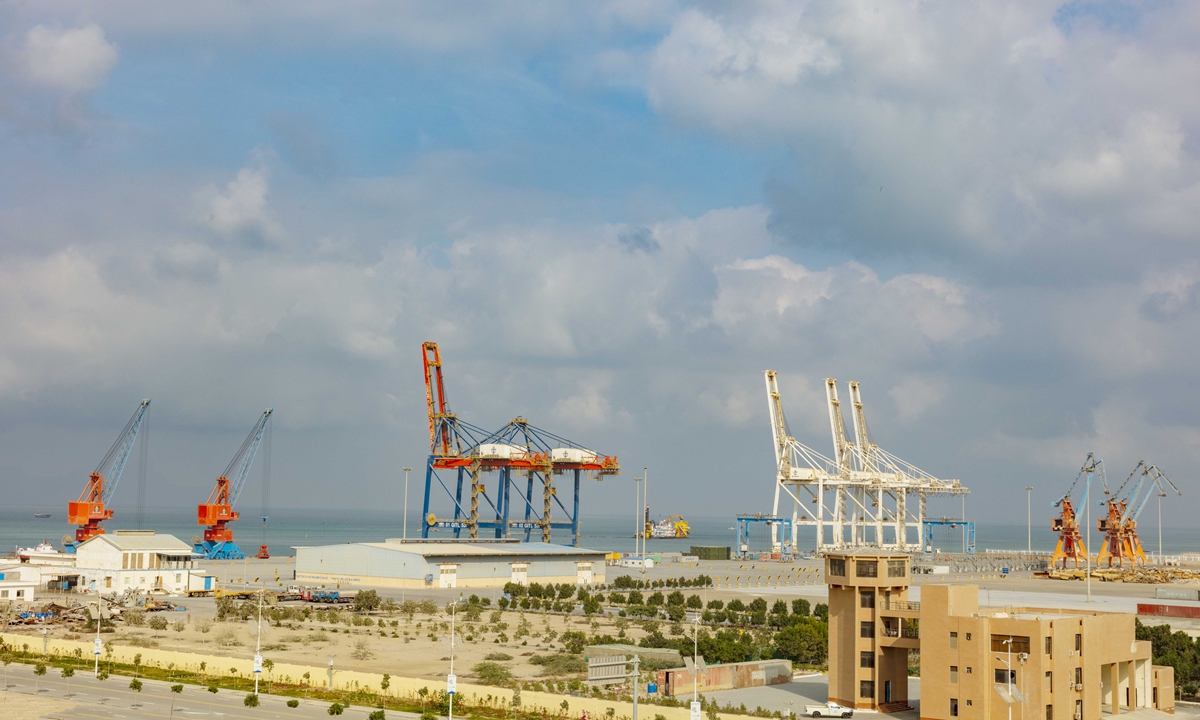
View of Gwadar port in Pakistan Photo: VCG
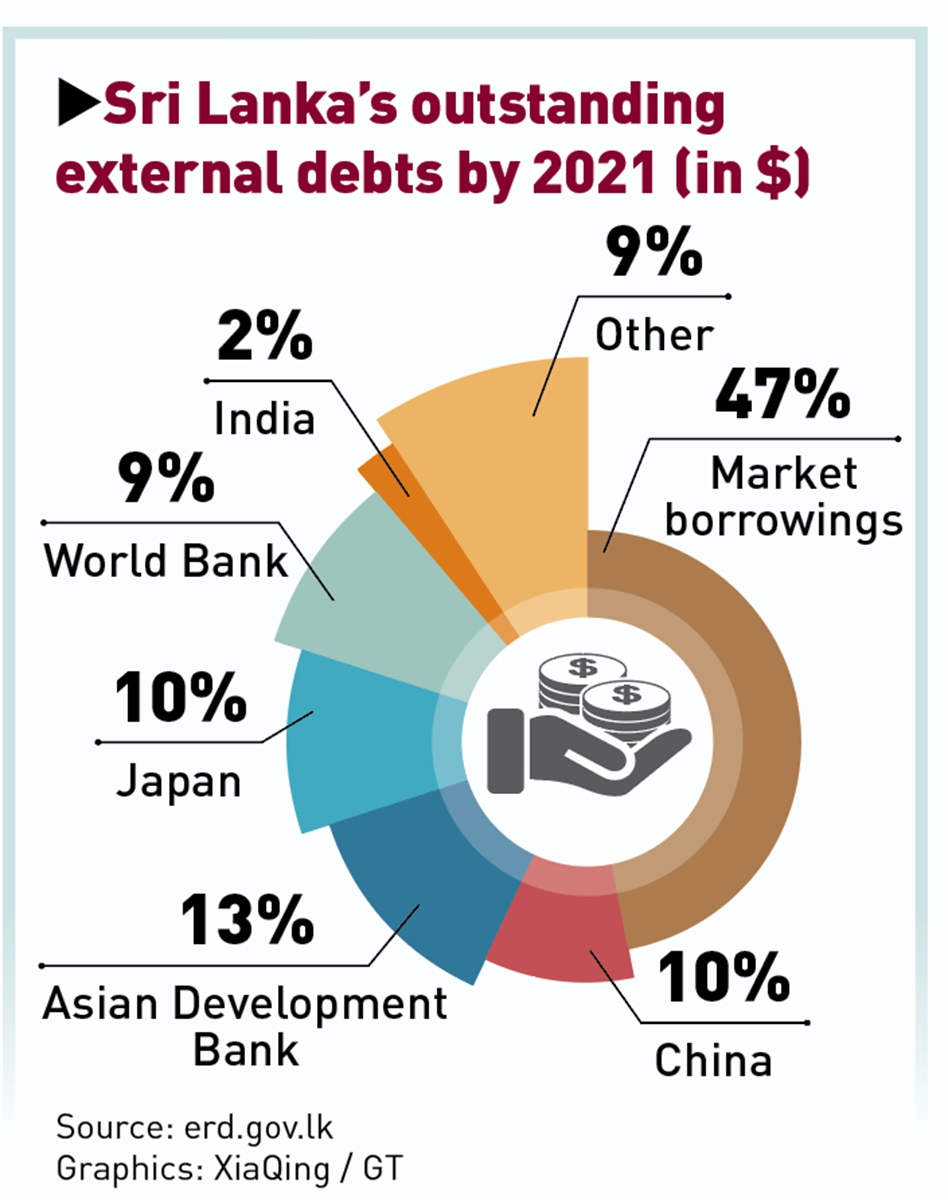
Compiled: GT
As Sri Lanka's economic crisis and Pakistan's political turmoil deepen, the smearing by Western and Indian forces against the China-proposed Belt and Road Initiative (BRI) has reached new heights, with some maliciously asserting that the "Chinese strategic trap" under BRI has dragged the South Asian countries into the political and economic abyss.
Industry insiders and observers said that the recent badmouthing by Western forces against BRI, coming against the backdrop of US adjusting Indo-Pacific strategy which strengthened US-India cooperation, is another deliberate and organized attack that does not stand scrutiny ground - similar to how rumors surrounding Chinese-invested projects of Hambantota Port were smashed back to 2017.
While Chinese investments have fueled the growth of South Asian neighbors, Western economies which exported inflationary pressure and drove up global food and energy prices - a key factor that threatens the livelihoods of millions of people in Sri Lanka - are the ones that should be blamed, analysts said.
Sri Lanka, an island nation of 22 million, faces an unprecedented devastating economic crisis this year, with $8.6 billion worth of debt payments due in 2022. The island country is dealing with severe shortages of everything from basic necessities, food, energy and electricity, the CNN reported. Skyrocketing prices have reportedly prompted protesters to take to the streets.
An India Today report on Wednesday bluntly attributed Sri Lanka's crisis to "foreign debts and loans from China." The report quoted leader of the opposition Sajith Premadasa as saying that Sri Lanka looked at China for financial help after the "2009 war with the rebels. Sri Lanka's total external debts surged to more than $45 billion, of which, around $8 billion was from China."
Echoing these allegations, some Western and Indian media and politicians have, since early January, tied Sri Lanka's crisis to what they called a strategic China "debt-trap diplomacy," claiming that loans from China are not making the economy more resilient but rather undue payments owed to China have pushed the country to the verge of collapse.
An India-based Chinese industry insider, who spoke on condition of anonymity, told the Global Times on Wednesday that it is "ridiculous" to blame China for Sri Lanka's economic woes as it ignores plain facts. In contrast to what Premadasa has claimed, the insider cited official data and pointed out that loans from China only accounted for about 10 percent of Sri Lanka's loan portfolio, while borrowings from international markets and Asian Development Bank are the two biggest sources of Sri Lanka's foreign debts. And loans from Japan also represent 10 percent of foreign debts, staying at the same level as China's.
"Who should be blamed for Sri Lanka's economic fiasco? On the one hand, Chinese investment has created numerous local job opportunities and fueled Sri Lanka's decade-long economic expansion. On the other hand, the West's unilateral sanctions on Russia have driven up the cost of energy and agricultural goods, making the foreign-reliant economy of Sri Lanka more vulnerable," Dai Yonghong, director of Institute of China's Overseas Interests, Shenzhen University, told the Global Times on Thursday.
In a statement sent to the Global Times, state-owned Power China said its photovoltaic demonstration project for a national defense training school in Sri Lanka, which was completed in December, has eased an enduring electricity shortage and largely saved expense for the training school. "The chairman of the school also hoped both sides to carry out deeper cooperation afterwards," the company said.
Analysts said that the financial crisis also laid bare the dire consequence of overreliance on the US dollar throughout Sri Lanka's economic system, which exposed it to dollar depreciation and US exporting inflationary pressure. And thus it is the US that should reflect how its irresponsibility has dealt a blow to emerging economies.
According to data from Sri Lanka's central bank, about 60 percent of the country's repayments need to be made in dollars.
An old accusation of 'debt trap'
The recent political turmoil in Pakistan, China's "iron brother," also offered a new element for Western and India anti-China forces to "cook up" further slander moves against investments under the China-Pakistan Economic Corridor (CPEC) —a $50-billion flagship BRI project that has brought tremendous benefits to local economy.
The Hindustan Times published an article titled "Pakistan and Sri Lanka face political turmoil fueled by Chinese debt," hyping that China owes over 10 percent of Pakistan's external debts.
Analysts said that this kind of fabrication playbook looks very familiar, as the accusations against China on creating so-called debt trap in South Asia is not new and had once been rife in 2017, when Sri Lanka inked a deal involving the operation of Hambantota port with China. Even Sri Lanka President Gotabaya Rajapaksa back then refuted the smear.
"It has become a national strategy for India to impede the implementation of BRI projects in South Asia, a region which it views China as a rival and in which it is seeking to expand its influence. In Pakistan, it has continuously been politicizing and obstructing CPEC. In Sri Lanka, it leveraged a combo of economic and political tools to exert maximum pressure on its neighbor," the insider said, taking example of a Chinese-invested power grid project in Sri Lanka, which was suspended in December due to India's interference.
With the release of the Biden administration's Indo-Pacific strategy, which identifies strengthened US-India cooperation as a key line of effort to besiege China, the organized slandering of the West against BRI will become more "intense," Zhang Xiaoyu, an expert on South Asian studies of the Communication University of China, told the Global Times on Wednesday.
Dai said that the ulterior move of the US could be advancing the Build Back Better World initiative in Asia, an infrastructure project widely seen as an alternative program designed by the US and its key allies to offset the achievements and results of the BRI.
"The question remains to what extent could the US and its allies provide light at the end of the tunnel for Sri Lanka's debt-burdened economy?" the insider asked. "So far we only see limited actions and empty words."
In March, Chinese government decided to provide emergency food assistance to Sri Lanka, the Xinhua News Agency reported. Beijing also signed a 10 billion yuan currency swap with Sri Lanka last year to ameliorate the South Asian country's public finance crisis.
